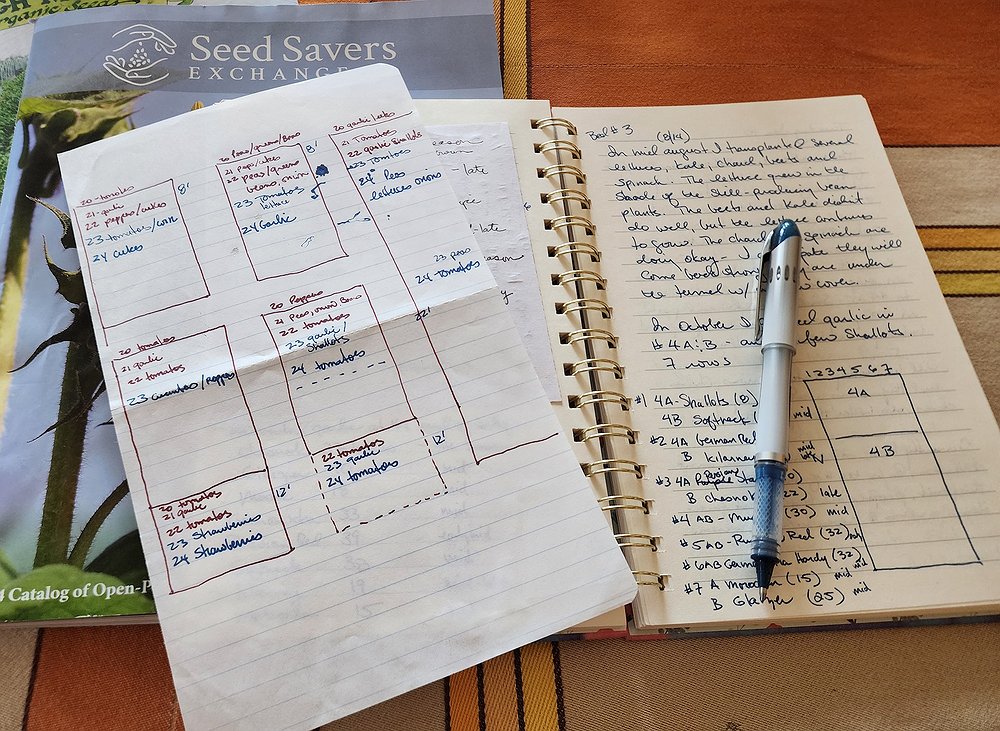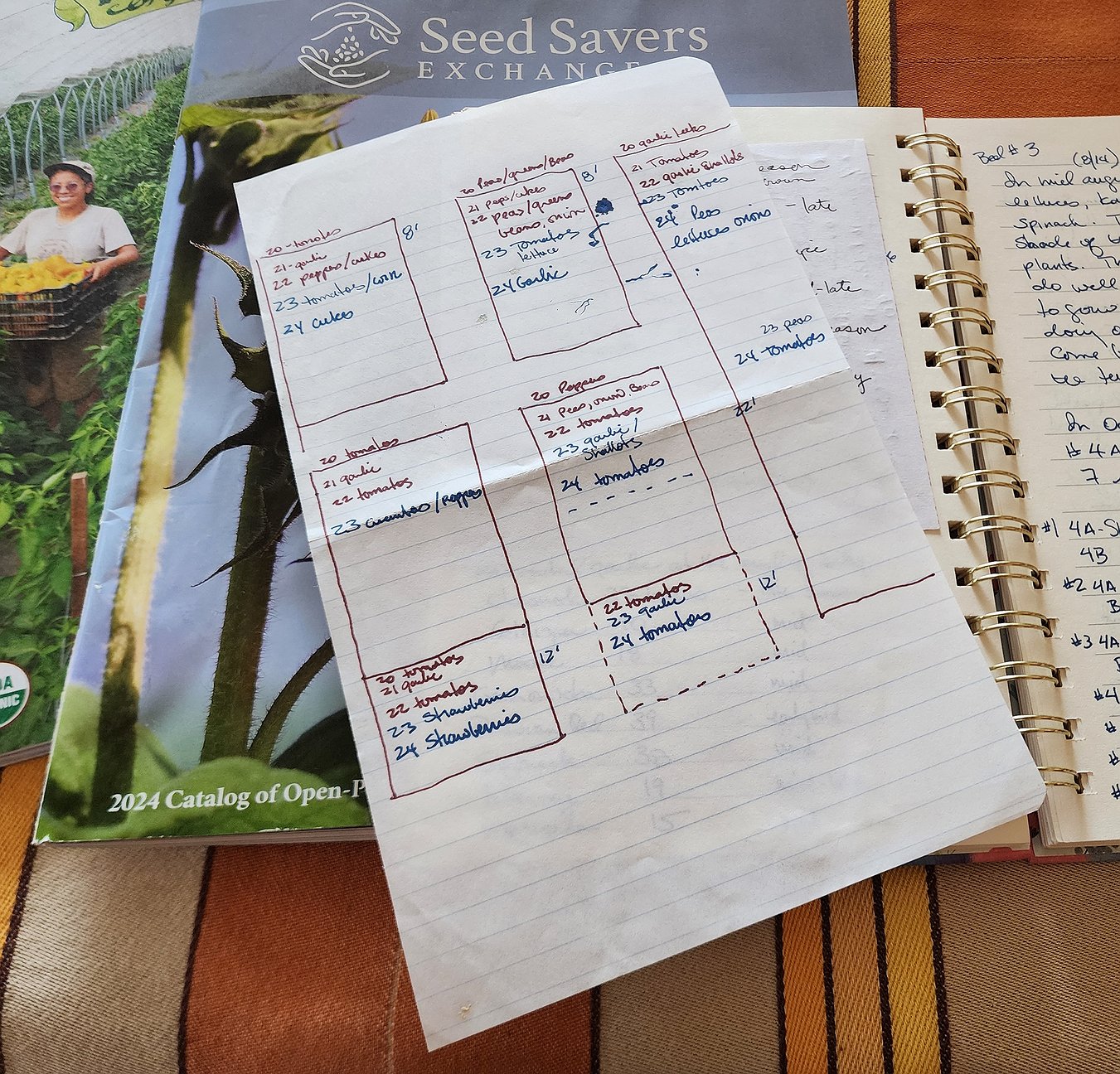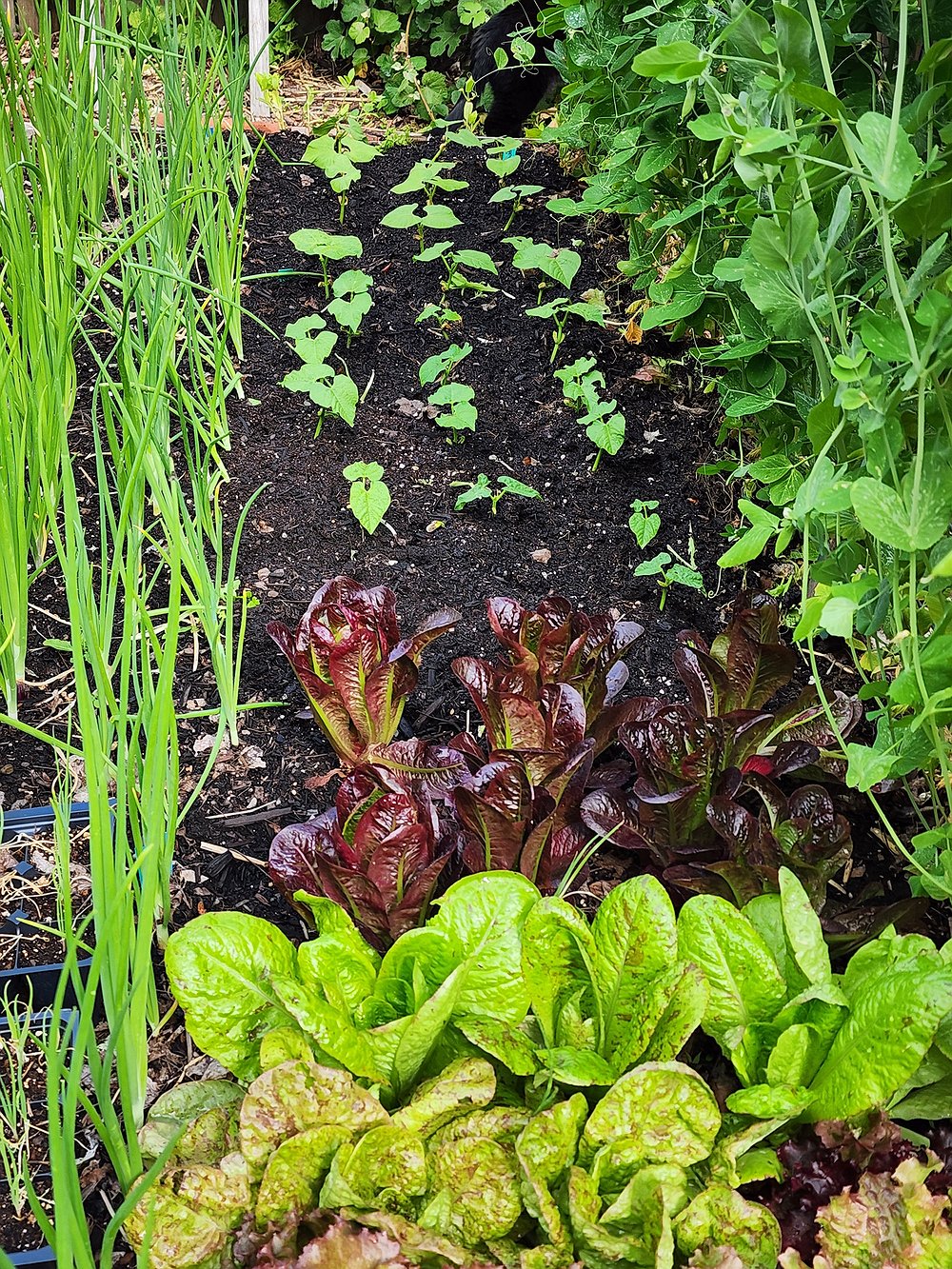How to turn winter into your best garden planning season
“The garden year has no beginning and no end.”
This quote by Elizabeth Lawrence rings true. Although we have put our gardens to bed for the winter, different garden activities continue. Thankfully, with much less toiling.
Now begins a quieter season of reflecting, reviewing, dreaming and planning for next year’s garden. Sadly, many gardeners overlook this step, which is just as pleasurable as digging in the soil and vital for success in the coming year.
If you take a few moments to reflect on your garden’s performance and do a little planning, you'll be better prepared next season. Here are a few tips to help you get started.
The most useful tool in the shed
My most valuable gardening tool isn’t made of steel — it’s my garden journal.
I jot notes at least weekly during the season, tracking weather and frost dates, planting and harvest dates, and — most importantly — my garden’s successes and challenges. This gives me a record of what worked and what didn’t, allowing me to improve my garden each year.
My journal also helps me remember details like plant varieties and locations. I no longer guess at plant names or, as I have done more than once, dig at a supposed bare spot only to find plant roots or bulbs.
A journal makes it easier to keep track of fertilizing, soil amending, rotating crops, seed germination and transplanting dates, as well as a zillion other details that are easily forgotten over time.
Whether you prefer pen and paper, computer tablet, voice recording or photographs, journaling helps you track your garden’s progress through the seasons and years. If you haven’t started one yet, now’s the perfect time.
Evaluate your current garden
The first steps to planning next season’s garden are assessing the past season and making notes. If you can do this while the garden season is still fresh in your mind, you’ll have better information to work from (as opposed to trying to remember those zillion details in April).
Whether or not you’ve kept a journal, the questions below will help set a framework for assessing and planning:
• What successes did you achieve, and why? If you can identify a “why,” it will help make successes repeatable.
• What challenges did you face? Some we can control, like not enough time in the garden, and others we can’t, like weather issues. Understanding challenges helps you be better prepared.
• What was a failure and why? Don’t fret over this. Every person who has ever picked up a garden trowel has had failures. These are the BEST learning opportunities, especially when you can identify the reasons.
Set goals for next season
After reviewing and assessing the garden, setting goals and turning your assessment into a plan is next.
What inspirational ideas do you have that you can incorporate into your garden plan? These don’t have to be significant revisions — perhaps you dream of a cut flower bed or want to try growing a new vegetable variety. I’ve found that when you make a list of goals, you can make it happen.
I sort my goals into must-dos, would-like-to-do, and a wish list to help prioritize my plan. As you begin, consider the following:
• What do you want to grow? Fall is a great time to research new plant varieties and ensure they suit your climate and soil. Create a list of what you want to grow and identify sources for purchasing seeds or plants. Try to buy seeds before the spring rush to avoid items being sold out.
• Can you grow more efficiently? Consider growing some plants in containers or vertically to free up space in a small garden. Succession planting and interplanting are two effective ways to grow more, regardless of your garden’s size.
• What needs to be revised or updated? These questions present great possibilities in the garden (and most of my answers land on the wish list). However, addressing simple tasks like getting a soil test, amending the soil, or replacing or repairing tools and supplies can make a big difference in the garden come spring.
Plan your layout
You don’t have to be a landscape architect to create a garden layout. Each year, I make a simple sketch of my garden and list what goes where. It’s become an invaluable resource for rotating crops in my small garden.
If you want something more sophisticated than a pencil sketch, free and fee-based online tools will create a garden layout for you, including planting times, plant spacing recommendations, succession planting ideas, and more. A quick Google search of “garden planning apps” returns many options.
Having a layout of your garden each year is critical for vegetable crop rotation, which helps reduce diseases and insect infestation and improves soil fertility.
I know from experience that this can be a challenge in small gardens, but try to grow different plants in different locations year after year.
A garden layout can also help you plan for succession and interplanting, which allows you to get the most out of your garden. Use your layout to map out when crops are finished producing so you can plant something in its place.
With interplanting, you can identify space in the garden where quick-growing vegetables, like radishes, can grow among those that take longer to mature, like tomatoes. No bare ground means fewer weeds and a more productive garden.
As the garden rests for winter, use this quiet time to reflect on the past season and plan for the next to set the stage for future success. You'll be ready to grow an even better garden when spring arrives. A gardener’s work never stops — it just takes on a different rhythm.
• • •
Candace Godwin is a certified Idaho Master Gardener, Garden Consultant, and owner of The Coeur d’Alene Coop (thecoeurdalenecoop.com) that offers seasonal plant sales and articles on gardening and raising backyard chickens.











